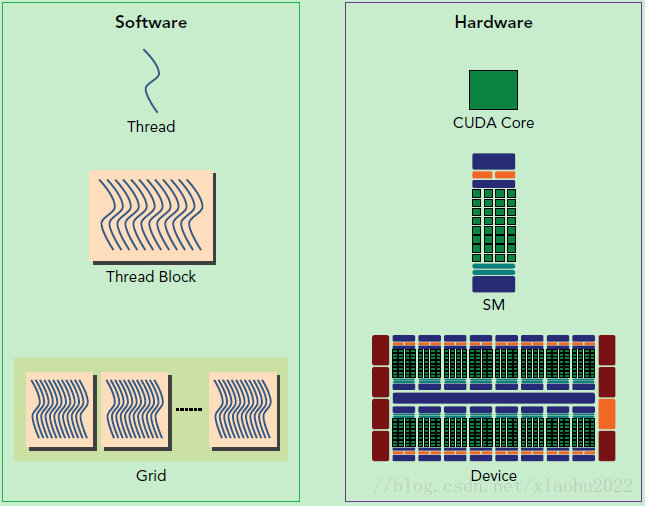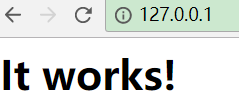1
2
3
4
5
6
7
8
9
10
11
12
13
14
15
16
17
18
19
20
21
22
23
24
25
26
27
28
29
30
31
32
33
34
35
36
37
38
39
40
41
42
43
44
45
46
47
48
49
50
51
52
53
54
55
56
57
58
59
60
61
62
63
64
65
66
67
68
69
70
71
72
73
74
75
76
77
78
79
80
81
82
83
84
85
86
87
88
89
90
91
92
93
94
95
96
97
98
99
100
101
102
103
104
105
106
107
108
109
110
111
112
113
114
115
116
117
118
119
120
121
122
123
124
125
126
127
128
129
130
131
132
133
134
135
136
137
138
139
140
141
142
143
144
145
146
147
148
149
150
151
152
153
154
155
156
157
158
159
160
161
162
163
164
165
166
167
168
169
170
171
172
173
174
175
176
177
178
179
180
181
182
183
184
185
186
187
188
189
190
191
192
193
194
195
196
197
198
199
200
201
202
203
204
205
206
207
208
209
210
211
212
213
214
215
216
217
218
219
220
221
222
223
224
225
226
227
228
229
230
231
232
233
234
235
236
237
238
239
240
241
242
243
244
245
246
247
248
249
| import os
import xml.etree.ElementTree as ET
import numpy as np
import cv2
import pickle
import copy
import yolo.config as cfg
import matplotlib.pyplot as plt
np.random.seed(1234)
classes = ['aeroplane', 'bicycle', 'bird', 'boat', 'bottle', 'bus',
'car', 'cat', 'chair', 'cow', 'diningtable', 'dog', 'horse',
'motorbike', 'person', 'pottedplant', 'sheep', 'sofa',
'train', 'tvmonitor']
class pascal_voc(object):
def __init__(self, phase, rebuild=False):
self.devkil_path = os.path.join(cfg.PASCAL_PATH, 'VOCdevkit')
self.data_path = os.path.join(self.devkil_path, 'VOC2007')
self.cache_path = cfg.CACHE_PATH
self.batch_size = cfg.BATCH_SIZE
self.image_size = cfg.IMAGE_SIZE
self.cell_size = cfg.CELL_SIZE
self.classes = cfg.CLASSES
self.class_to_ind = dict(zip(self.classes, range(len(self.classes))))
self.flipped = False
self.phase = phase
self.rebuild = rebuild
self.cursor = 0
self.epoch = 1
self.gt_labels = None
self.prepare()
def get(self):
images = np.zeros(
(self.batch_size, self.image_size, self.image_size, 3))
labels = np.zeros(
(self.batch_size, self.cell_size, self.cell_size, 25))
count = 0
while count < self.batch_size:
imname = self.gt_labels[self.cursor]['imname']
flipped = self.gt_labels[self.cursor]['flipped']
images[count, :, :, :] = self.image_read(imname, flipped)
labels[count, :, :, :] = self.gt_labels[self.cursor]['label']
count += 1
self.cursor += 1
if self.cursor >= len(self.gt_labels):
np.random.shuffle(self.gt_labels)
self.cursor = 0
self.epoch += 1
return images, labels
def image_read(self, imname, flipped=False):
image = cv2.imread(imname)
image = cv2.resize(image, (self.image_size, self.image_size))
image = cv2.cvtColor(image, cv2.COLOR_BGR2RGB).astype(np.float32)
image = (image / 255.0) * 2.0 - 1.0
if flipped:
image = image[:, ::-1, :]
return image
def prepare(self):
gt_labels = self.load_labels()
if self.flipped:
print('Appending horizontally-flipped training examples ...')
gt_labels_cp = copy.deepcopy(gt_labels)
for idx in range(len(gt_labels_cp)):
gt_labels_cp[idx]['flipped'] = True
gt_labels_cp[idx]['label'] = \
gt_labels_cp[idx]['label'][:, ::-1, :]
for i in range(self.cell_size):
for j in range(self.cell_size):
if gt_labels_cp[idx]['label'][i, j, 0] == 1:
gt_labels_cp[idx]['label'][i, j, 1] = \
self.image_size - 1 - \
gt_labels_cp[idx]['label'][i, j, 1]
gt_labels += gt_labels_cp
np.random.shuffle(gt_labels)
self.gt_labels = gt_labels
return gt_labels
def load_labels(self):
cache_file = os.path.join(
self.cache_path, 'pascal_' + self.phase + '_gt_labels.pkl')
if os.path.isfile(cache_file) and not self.rebuild:
print('Loading gt_labels from: ' + cache_file)
with open(cache_file, 'rb') as f:
gt_labels = pickle.load(f)
return gt_labels
print('Processing gt_labels from: ' + self.data_path)
if not os.path.exists(self.cache_path):
os.makedirs(self.cache_path)
if self.phase == 'train':
txtname = os.path.join(
self.data_path, 'ImageSets', 'Main', 'trainval.txt')
else:
txtname = os.path.join(
self.data_path, 'ImageSets', 'Main', 'test.txt')
with open(txtname, 'r') as f:
self.image_index = [x.strip() for x in f.readlines()]
gt_labels = []
for index in self.image_index:
label, num = self.load_pascal_annotation(index)
if num == 0:
continue
imname = os.path.join(self.data_path, 'JPEGImages', index + '.jpg')
gt_labels.append({'imname': imname,
'label': label,
'flipped': False})
print('Saving gt_labels to: ' + cache_file)
with open(cache_file, 'wb') as f:
pickle.dump(gt_labels, f)
return gt_labels
def load_pascal_annotation(self, index):
"""
Load image and bounding boxes info from XML file in the PASCAL VOC
format. 002939
"""
imname = os.path.join(self.data_path, 'JPEGImages', index + '.jpg')
im = cv2.imread(imname)
h_ratio = 1.0 * self.image_size / im.shape[0]
w_ratio = 1.0 * self.image_size / im.shape[1]
label = np.zeros((self.cell_size, self.cell_size, 25))
filename = os.path.join(self.data_path, 'Annotations', index + '.xml')
tree = ET.parse(filename)
objs = tree.findall('object')
for obj in objs:
bbox = obj.find('bndbox')
x1 = max(min((float(bbox.find('xmin').text) - 1) * w_ratio, self.image_size - 1), 0)
y1 = max(min((float(bbox.find('ymin').text) - 1) * h_ratio, self.image_size - 1), 0)
x2 = max(min((float(bbox.find('xmax').text) - 1) * w_ratio, self.image_size - 1), 0)
y2 = max(min((float(bbox.find('ymax').text) - 1) * h_ratio, self.image_size - 1), 0)
cls_ind = self.class_to_ind[obj.find('name').text.lower().strip()]
boxes = [(x2 + x1) / 2.0, (y2 + y1) / 2.0, x2 - x1, y2 - y1]
x_ind = int(boxes[0] * self.cell_size / self.image_size)
y_ind = int(boxes[1] * self.cell_size / self.image_size)
if label[y_ind, x_ind, 0] == 1:
continue
label[y_ind, x_ind, 0] = 1
label[y_ind, x_ind, 1:5] = boxes
label[y_ind, x_ind, 5 + cls_ind] = 1
return label, len(objs)
"""
3 , 4 = [0. 0. 0. 0. 0.]
3 , 5 = [ 1. 325.248 229.6 111.104 228.48 ]
class_one_hot = [0. 0. 0. 0. 0. 0. 0. 0. 1. 0. 0. 0. 0. 0. 0. 0. 0. 0. 0. 0.]
class_index = 8
class_name = chair
3 , 6 = [0. 0. 0. 0. 0.]
4 , 0 = [0. 0. 0. 0. 0.]
4 , 1 = [0. 0. 0. 0. 0.]
4 , 2 = [ 1. 132.16 288.4 172.928 316.96 ]
class_one_hot = [0. 0. 0. 0. 0. 0. 0. 0. 1. 0. 0. 0. 0. 0. 0. 0. 0. 0. 0. 0.]
class_index = 8
class_name = chair
4 , 3 = [0. 0. 0. 0. 0.]
data['label'].shape # 7,7,25 (confidence+ (x,y,w,h) + 20-classes)
confidence: 1 if gt_box center falls in this grid, otherwise 0
box(x,y,w,h): gt_box center x,y,w,h; otherwize [0,0,0,0]
class: 20-one-hot-vector if gt_box; othersize [0]*20
how flip works: flip x dim
(1) flip grid x-dim: data['label'] = data['label'][:, ::-1, :]
y-grid = y-grid [0,1,2,3,4,5,6]
x-grid flip [0,1,2,3,4,5,6] ===>[6,5,4,3,2,1,0]
(2) flip data['label']
confidence = confidence
cx: flip cx = 417-cx: data['label'][i, j, 1] = 448 - 1 - data['label'][i, j, 1]
cy = cy
w = w
h = h
class = class
"""
def print_data(data):
for y in range(7):
for x in range(7):
print(y, ",", x, "= ", data['label'][y, x, :5])
if data['label'][y, x, 0] > 0:
class_one_hot = data['label'][y, x, 5:]
class_index = np.argmax(class_one_hot)
print(" class_one_hot = ", class_one_hot)
print(" class_index = ", class_index)
print(" class_name = ", classes[class_index])
def flip_data(data):
data['flipped'] = True
data['label'] = data['label'][:, ::-1, :]
for y in range(7):
for x in range(7):
if data['label'][y, x, 0] == 1:
data['label'][y, x, 1] = 448 - 1 - data['label'][y, x, 1]
def show_image(filename):
image = cv2.imread(filename)
rgb_image = cv2.cvtColor(image, cv2.COLOR_BGR2RGB)
plt.axis("off")
plt.imshow(rgb_image)
plt.show()
print("========================PASCAL=================================")
pascal = pascal_voc('train')
print(pascal.class_to_ind)
print(len(pascal.gt_labels))
data = pascal.gt_labels[0]
print(data.keys())
print(data['imname'])
print(data['label'].shape)
print(classes)
show_image(data['imname'])
print("========================DATA=================================")
print_data(data)
print("=========================FLIPPED================================")
flipped = copy.deepcopy(data)
flip_data(flipped)
print_data(flipped)
|













